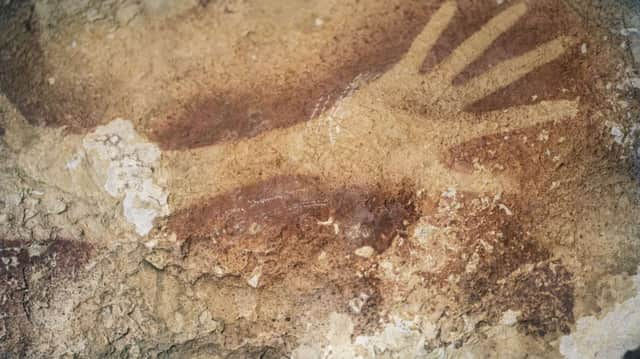Roger Cox: Sulawesi cave may alter timeline of history


First discovered in the 1950s, the group of animal paintings and hand stencils on the walls of a limestone cave on the island of Sulawesi had initially been estimated to be 10,000 years old. Having done some nifty work measuring rates of uranium decay, however, researchers from Australia’s Griffith University announced that a picture of a babirusa, or pig deer, is at least 35,400 years old, making it one of the earliest figurative paintings known to science. More significantly still, they found that one of the hand stencils (made by placing a hand on a wall and blowing dye over it) is at least 39,900 years old – the oldest example of this commonly occurring ancient art form anywhere, and roughly contemporaneous with those Spanish splodges.
Ever since the news broke, experts have been queuing up to explain the significance of these findings, and considering the works in question may simply have been produced by a few bored hunter-gatherers doing their best to while away a rainy afternoon, the implications are huge.
Advertisement
Hide AdAdvertisement
Hide AdThe research decisively shoots down the theory that humans first began making art in Europe about 40,000 years ago – evidently people were also drawing and painting in Asia at more-or-less the same time. This means that either a) a cave person in Spain and a cave person in Indonesia both coincidentally decided to start drawing on the walls of their homes at the same historical moment or b) – more likely – humans have been making art for a lot longer than 40,000 years.
Early man is thought to have migrated from Africa to Europe and Asia around 60,000 years ago, and in the wake of these findings it seems probable that he mastered drawing and painting there, before heading north.
This raises the tantalising prospect that there could be examples of even more ancient art out there – at least another 20,000 years of art history, in fact. Alistair Pike of Southampton University’s archaeology department predicts a glut of similar discoveries over the next few years in Asia, and particularly in China. “There is bound to be a revolution when these countries start seriously studying their sites,” he told New Scientist.
The Sulawesi paintings, then, may turn out to be merely the tip of a very large, very important iceberg.